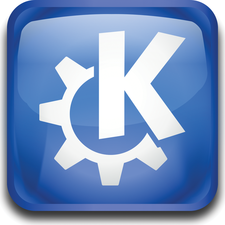The "Kool" desktop is almost as old as Justin Bieber – and far more stable.
Desktop Through the Decades

We look at the ups and downs of the past two decades of the "Kool" desktop.
Those of us who started using Linux back in the late 1990s remember all too well that it wasn't a pretty operating system on the desktop. Sure, we had a bunch of tools like Netscape and Gimp at our disposal, and a variety of window managers, but everything felt like a bit of a kludge. Nothing was really well integrated, every app had its own look and feel, and while we still preferred it to the other operating systems of the time, we never really felt comfortable in it.
That's not to say it was all bad. FVWM users, for example, were rocking an insanely configurable window manager that wiped the floor with Windows and Mac OS. Users who did most of their work in text terminals were having an awesome time. The GNU/Linux combination with XFree86 on top was a workable desktop operating system for geeks with time to invest, but for newcomers it all looked rather clumsily bolted together.
Fortunately, one group of hackers had the foresight to do something about this. Instead of having a window manager developed by one team, and a file manager by another, and a text editor by yet another, all using different toolkits and config files and themes, wouldn't it be great if all these bits and pieces were worked on in unison? Wouldn't it make more sense for a desktop environment and all its common utilities to be developed by a single project, to encourage consistency and code reuse?
[...]
Buy this article as PDF
(incl. VAT)
Buy Linux Magazine
Subscribe to our Linux Newsletters
Find Linux and Open Source Jobs
Subscribe to our ADMIN Newsletters
Support Our Work
Linux Magazine content is made possible with support from readers like you. Please consider contributing when you’ve found an article to be beneficial.

News
-
Parrot OS Switches to KDE Plasma Desktop
Yet another distro is making the move to the KDE Plasma desktop.
-
TUXEDO Announces Gemini 17
TUXEDO Computers has released the fourth generation of its Gemini laptop with plenty of updates.
-
Two New Distros Adopt Enlightenment
MX Moksha and AV Linux 25 join ranks with Bodhi Linux and embrace the Enlightenment desktop.
-
Solus Linux 4.8 Removes Python 2
Solus Linux 4.8 has been released with the latest Linux kernel, updated desktops, and a key removal.
-
Zorin OS 18 Hits over a Million Downloads
If you doubt Linux isn't gaining popularity, you only have to look at Zorin OS's download numbers.
-
TUXEDO Computers Scraps Snapdragon X1E-Based Laptop
Due to issues with a Snapdragon CPU, TUXEDO Computers has cancelled its plans to release a laptop based on this elite hardware.
-
Debian Unleashes Debian Libre Live
Debian Libre Live keeps your machine free of proprietary software.
-
Valve Announces Pending Release of Steam Machine
Shout it to the heavens: Steam Machine, powered by Linux, is set to arrive in 2026.
-
Happy Birthday, ADMIN Magazine!
ADMIN is celebrating its 15th anniversary with issue #90.
-
Another Linux Malware Discovered
Russian hackers use Hyper-V to hide malware within Linux virtual machines.

